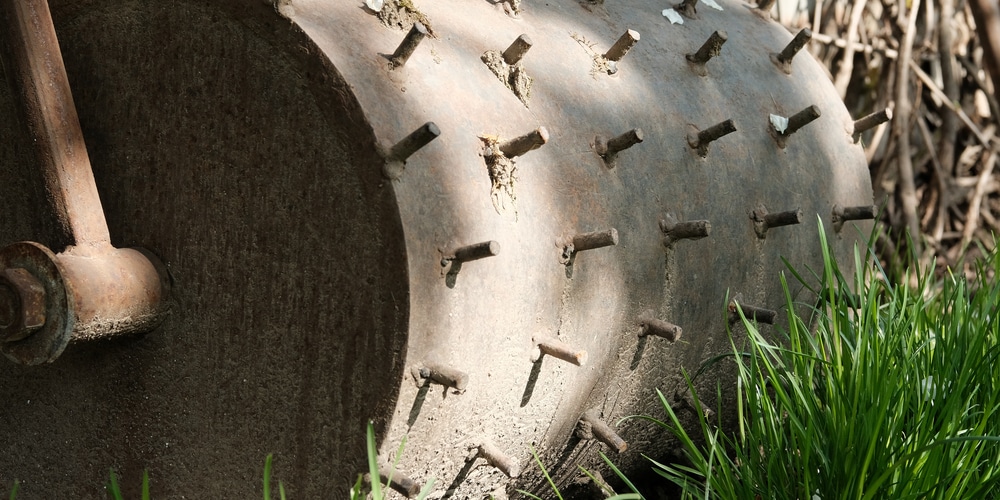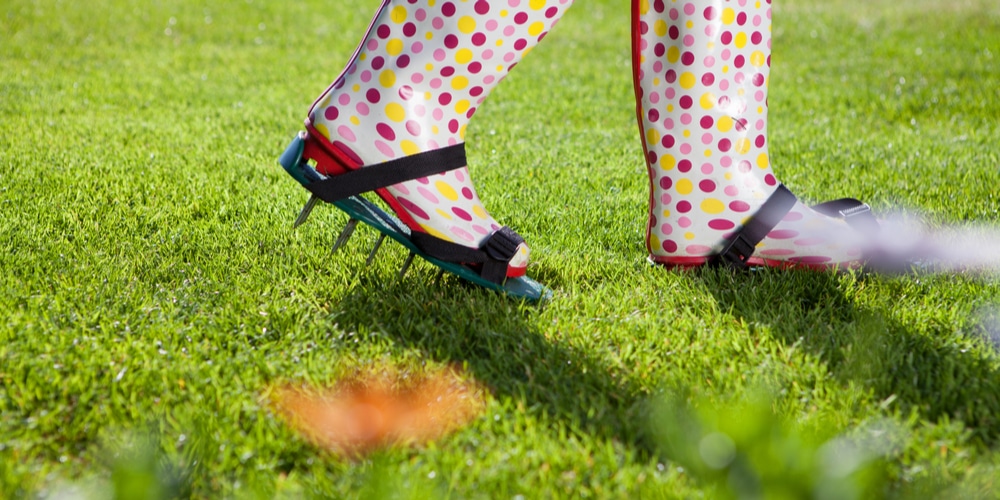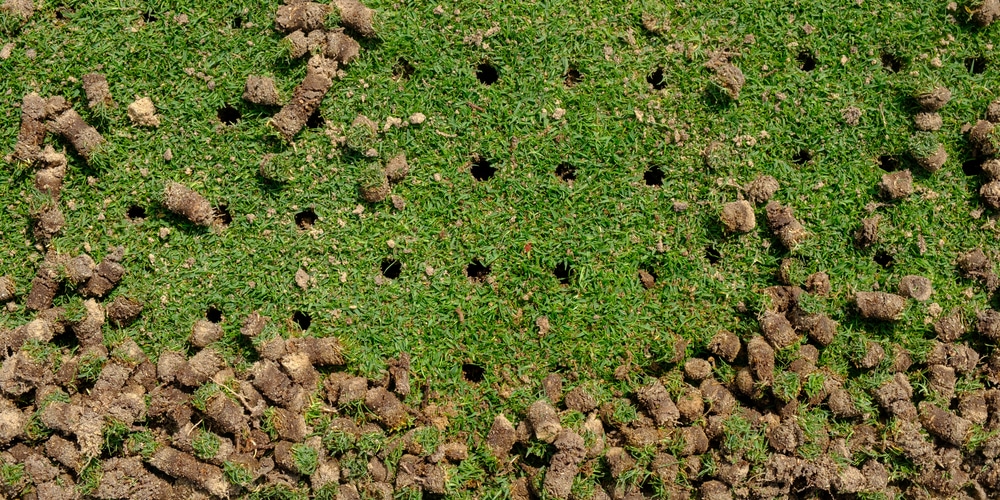Aeration relieves soil compaction. It keeps high traffic, and high-performance turf like football and soccer fields healthy. Without it, the roots get restricted, cannot grow anymore because they do not receive enough oxygen. So, using an aeration tool is essential.
But which tool is the best lawn aerator? Although you can find several designs and both mechanical and manual versions of lawn aerators, the discussion centers around the difference between spike VS plug aerator tools. In general, plug aerators are better because they remove parts of the turf. But most professional mechanical aerators have spikes. They go deep into the ground and wiggle the soil beneath the surface, creating oxygen-rich fissures.
If you have the time to use it, choosing a plug aerator is your best option—manually plugging a whole lawn can take hours or even days. On the other hand, spike aerators are only better if you are willing to put enough money or effort into them.
Relieving Soil Compaction: The Basics
Restricted root growth is an issue that appears when soil pressure goes over 300 psi. For clarity, it does not matter if the pressure increases at the surface or deeper depths because it will hurt root growth in either case.
Sometimes, a mechanical aerator does more than what you see, helping plant roots to get down and break through. But the main idea is to:
- enhance water absorption
- generate a healthy root system by introducing more oxygen into the soil
- improve overall air exchange
- increase fertilizer effectiveness
Depending on your needs, the best solution may vary as well. For example, if you want to address patch issues, a plug aerator works best because it removes organic matter. But spike aerators are less disruptive in terms of aesthetics. They involve no cleanup yet still optimize gas exchange, water, and fertilizer programs. So, spike aerators are better for low-traffic turf.
Different Types Of Soil And Areas
If you aerate a high-traffic turf, heavy foot traffic or carts and tractors will compact the soil faster because you exert pressure on them all the time. But how frequently you need to aerate that pathway once more will depend on native soil composition.
In detail, heavy clay has more issues with soil compaction than sandy soils. But if you have heavy clay and plenty of organic matter, you will have fewer problems with compaction. Such a give-and-take situation means that you have to weigh different factors like:
- Grass blade colors—optimum drainage means healthy green blades while waterlogged soil leads to yellowish grass
- How water infiltrates into the soil
- Presence of standing water and pooling on your lawn
Cultural practices are the most critical factor of all. If you do everything appropriately—water, fertilize, and mow the lawn the way it needs you to—aeration will only be necessary as a curative practice.
Once you aerate your turf, the particles in your soil will not bind together without pressure. But when you use a plug aerator, you will have to fill the holes with sand. Otherwise, you will have an uneven surface.
Sandy loams usually do not have a soil compaction issue. So, a spike aerator like a garden fork is more than enough to address any potential problem.
Spike VS Plug Aerator: What Is The Real Difference?
Plug or core aerators pull at least two cores at a time. Cores’ length depends on the plug model. But they usually go about 4″ deep. Instead, spike aerators like pitchforks poke holes in your turf and go as deep as you can push them.
Spike aerating without wiggling the soil after fully inserting the tool deep into the lawn can compact the turf more. Of course, plug aerators do not have such a downside. But they are harder to use in some lawn places.
If the soil moisture level gets too wet or dry, the manual plug aerator will not be your friend. It will not work well, which means you will sweat buckets for little or no gains. Also, if you have mixed soil, it will not perform great in sandy areas. On the opposite side, you can stick a garden fork everywhere and work in most soil conditions as soon as you have spare time.
Learning about spike VS plug aerator tools can only make a difference when comparing the instrument with the turf needs. For professional lawn management, a mechanical aerator usually offers both solutions. But such privilege does not come cheap. So, a safe way to test things out might be to use the old pitchfork sitting in your shed or garage before getting a plug aerator.
Unless you have severe water pooling on your lawn, that is. In this case, getting a core aerator would make more sense because the soil is most likely too compacted.


